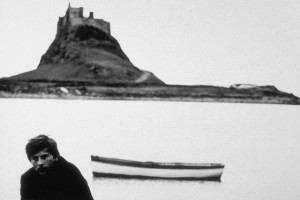
Last week I re-watched Roman Polanski’s 1966 film Cul-de-Sac. Lionel Stander and Donald Pleasance are first-rate, but they share star billing with Lindisfarne Castle, which is the location of this one-setting film. Lindisfarne is a sixteenth-century castle that was restored and converted into a country retreat by Sir Edwin Lutyens, whose austere architecture contributes greatly to the tense atmosphere of the film. It reminded me how few movie director’s have exploited outstanding architecture. Joseph Losey set his version of Mozart’s Don Giovanni (1979) in and around Vicenza, and made full use of Palladio’s Villa Rotonda. Jean Luc Godard set Contempt (1963) almost entirely in Curzio Malaparte’s remarkable seaside villa in Capri. Country houses obviously play a big role in British costume dramas: Vanbrugh’s Castle Howard in the original Brideshead Revisted TV series, and Charles Barry’s Highclere Castle in Downton Abbey. But mostly, architecture is merely a walk-on. Hal Ashby gave Richard Morris Hunt’s Biltmore House a cameo role in Being There (1979), although he moved it from Asheville to the outskirts of Washington, D.C. Michelangelo Antonioni, who was trained as an architect, often used modern architecture to convey urban angst, never more than in Zabriskie Point (1970), in which he “blew up” a house designed by Paulo Soleri (in his Wrightian phase). And Stanley Kubrick staged the infamous home invasion scene in A Clockwork Orange (1971) in a coolly modern house designed by Richard Rogers and Norman Foster. Polanski made excellent use of architecture again in The Ghost Writer (2010). The beach house was entirely make-believe—an amalgam of an actual house on Germany’s North Sea coast with shooting sets—but it conveys the slightly spooky atmosphere of elegant, high-end minimalism to a tee.

I’d add Terry Gilliam’s “Brazil” to any list of architecturally savvy films.
It didn’t use recognizably real locations, but the sense of place created by strong forms, furnishings, and materials were central to the story. And even the menacing sites, looked amazing.
Going from the other angle, Wright’s Hollyhock house keeps showing up in films, for some reason it always seems to be the home of the master criminal/bad guy. I don’t know if they appreciate good architecture more or can just afford it.
Most of the action in “I Am Love” (2010), with Tilda Swinton, takes place in and around the Villa Necchi Campiglio in Milan, built in the 1930s by Piero Portaluppi. The movie is inseparable from the villa, such that I would not be suprised to find that the movie was conceived for this specific architecture and no other.
I have seen “I am Love,” and admired the interiors, although I was unaware of Portaluppi. There is an excellent archive on http://www.portaluppi.org. It lists the Villa Campiglio as 1932-35. He was a prolific designer. Since Swinton produced her own film, you may be right about the house as inspiration.